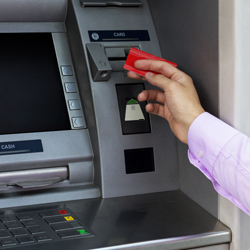 |
| Recycling ATMs, which can reuse deposited cash to supply withdrawals, are another way in which ATM-associated crime can be reduced |
Contactless is already being |
There is absolutely no |
ATM security continues to tackle criminals
 |
| Recycling ATMs, which can reuse deposited cash to supply withdrawals, are another way in which ATM-associated crime can be reduced |
Contactless is already being |
There is absolutely no |
The new scanner can quickly screen large groups of people without needing them to stop or slow down Most body scanners are designed to work one person at a time, checkpoint style. Q...
Hikvision has been in the news in the United Kingdom recently, including a front page news story in The Times. SourceSecurity.com offered Keen Yao, Vice President at Hikvision’s In...
The global market for security as a service is set to grow from $921 million in 2016 to $1.49 billion by 2020 The global security as a service market is made up of video surveillanc...
CSR applies to the security industry in many different ways and can be practised by small or large businesses What exactly is Corporate Social Responsibility (CSR) and how does it a...
It’s become a hot topic lately, but what are the real prospects for the smart home and home automation market? More specifically, what role can the security industry play in what is seen as a gr...
Budget cuts are causing councils to scale down their systems, or decommission them altogether Budget cuts in England and Wales are leading to cameras being switched off to save mone...
H.265 compression, apps and the inherent security of security systems were some of the themes to be gleaned on the first day of IFSEC International. Almost every video exhibitor I saw on day one of t...
H.265 compression continued to be a popular topic from exhibitors on the second day of IFSEC Video beyond security, compression, HD over analogue and integration were on the lips of...
Porter will tell IFSEC attendees about an upcoming National Surveillance Camera Strategy The Surveillance Camera Commissioner for England and Wales, Tony Porter, will be speaking at...
Organisations have a duty of care to protect their employees wherever they work. But in the increasingly complex world that we all live in, the ability to deliver a risk-commensurate and...
A “smart home” featuring networked security devices and other home automation products will be new to IFSEC International 2016 in June. This replica smart home will be at the heart of the...
Research at the University of East Anglia in Norwich, England, is developing a technology that can provide clearer, more defined camera images by fusing RGB (red-green-blue) images with...
Automated CCTV lip reading is challenging due to low frame rates and smallimages, but the University of East Anglia is pushing the next stage of this technology Scientists at the Un...
The report says almost 50% of the public transport organisations are willingto broaden the type of video analytics used A detailed survey of public transport operators shows a growi...
Nationally from 2012 - 2015, there has been a decrease in the money spent on theinstallation, monitoring and maintenance of CCTV compared to the period 2009-2012 The UK has often be...
Poor quality training, poor literacy and numeracy skills and inadequatesupervision were some of the areas for concern highlighted by ASQA A lack of consistency in licensing, poo...
Led by European nations, there is a global shift to e-passports, with over 100 countries using these technologies With the number of global international tourist arrivals standing a...
There are between 4 and 6.8 million lone workers in the UK, and many of us arelone workers at some point in our working lives The Suzy Lamplugh Trust was set up to highlight the ris...
Stratus Technologies is a provider of “always-on” technology, which helps to ensurethe running of mission-critical access control and video surveillance applications Bui...
The proportion of failed ATM attacks is more than 50%, but the collateraldamage is high and growing ATM security providers and products can take various countermeasures to mitigate...

To serve various vertical markets and industries effectively, security professionals must recognise that each sector has unique assets, risks, compliance requirements, and operatio...

The Marin Hospital of Hendaye in the French Basque Country faced common challenges posed by mechanical access control. Challenges faced Relying on mechanical lock-and-key technol...

A lot has been said about door security — from reinforced door frames to locking mechanisms to the door construction — all of which is crucial. But what security measur...
One system, one card
DownloadEnhancing physical access control using a self-service model
DownloadAligning physical and cyber defence for total protection
DownloadUnderstanding AI-powered video analytics
DownloadHow to implement a physical security strategy with privacy in mind
Download